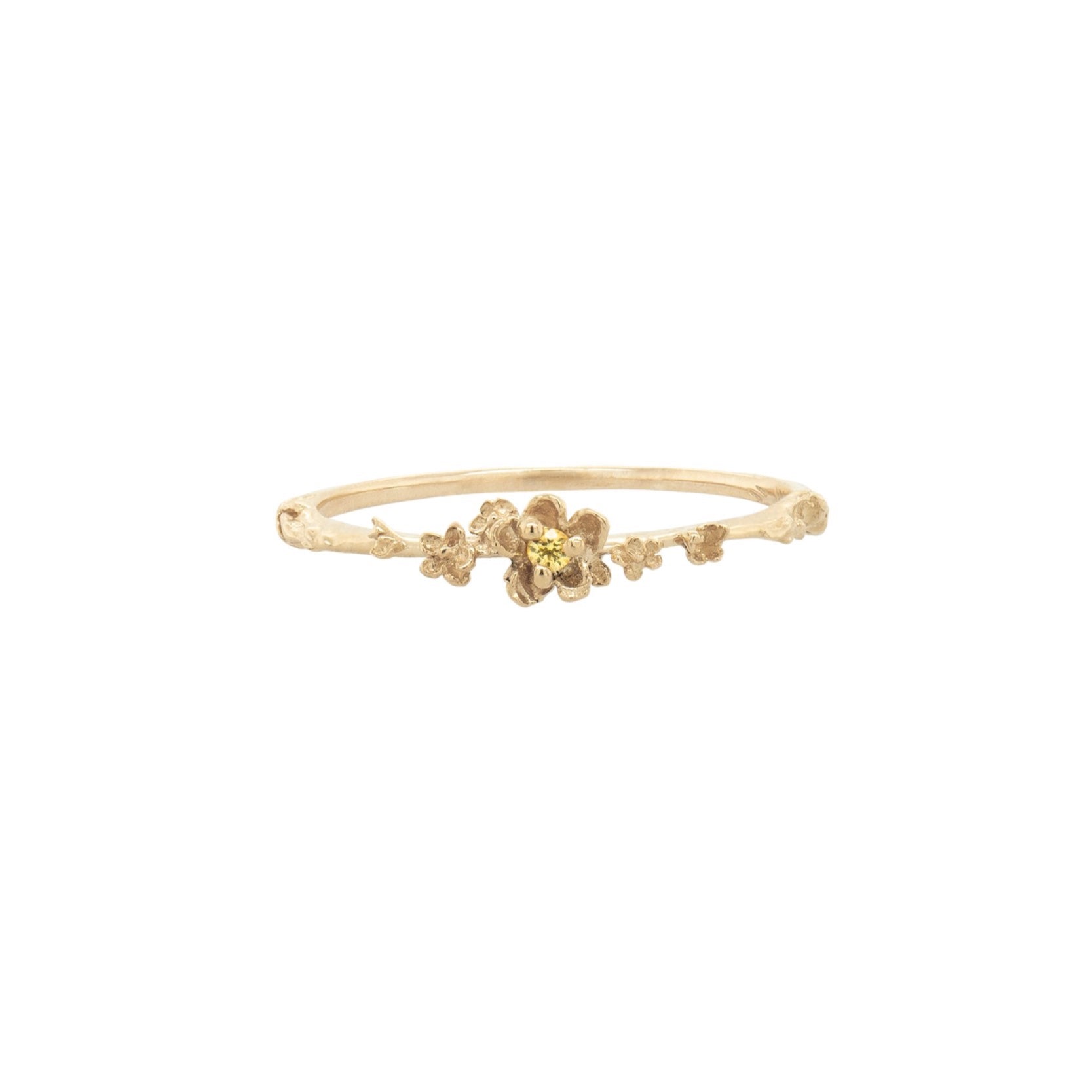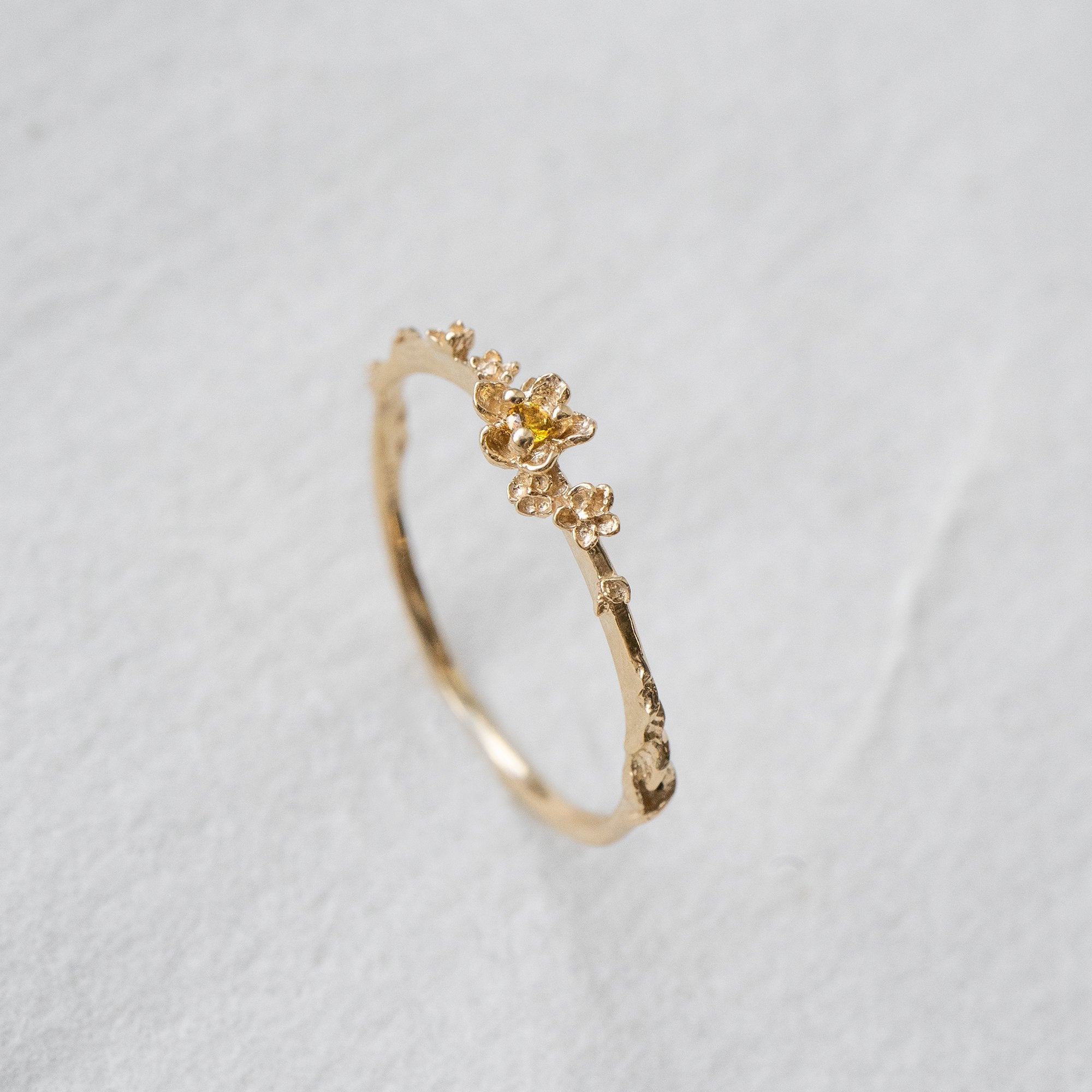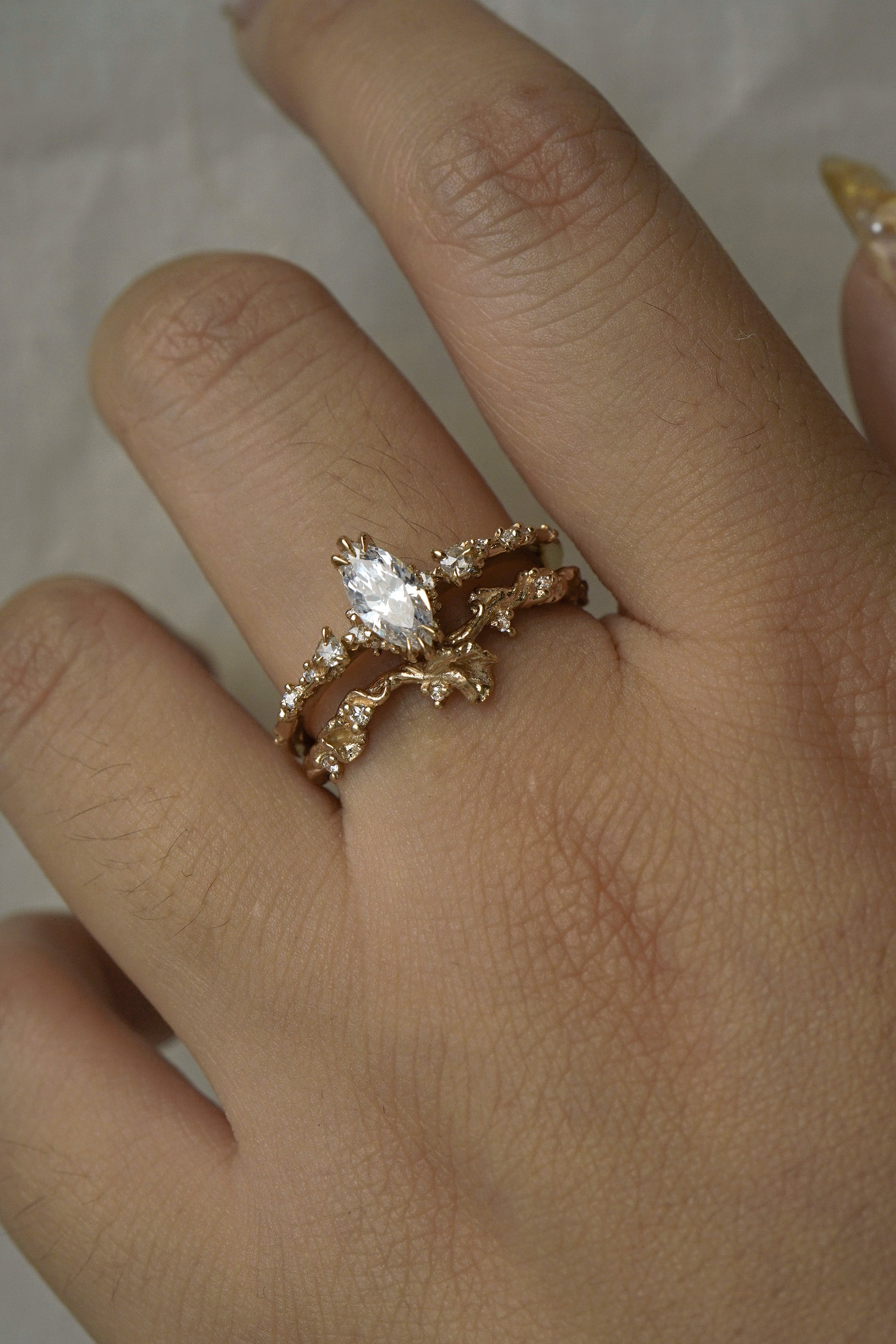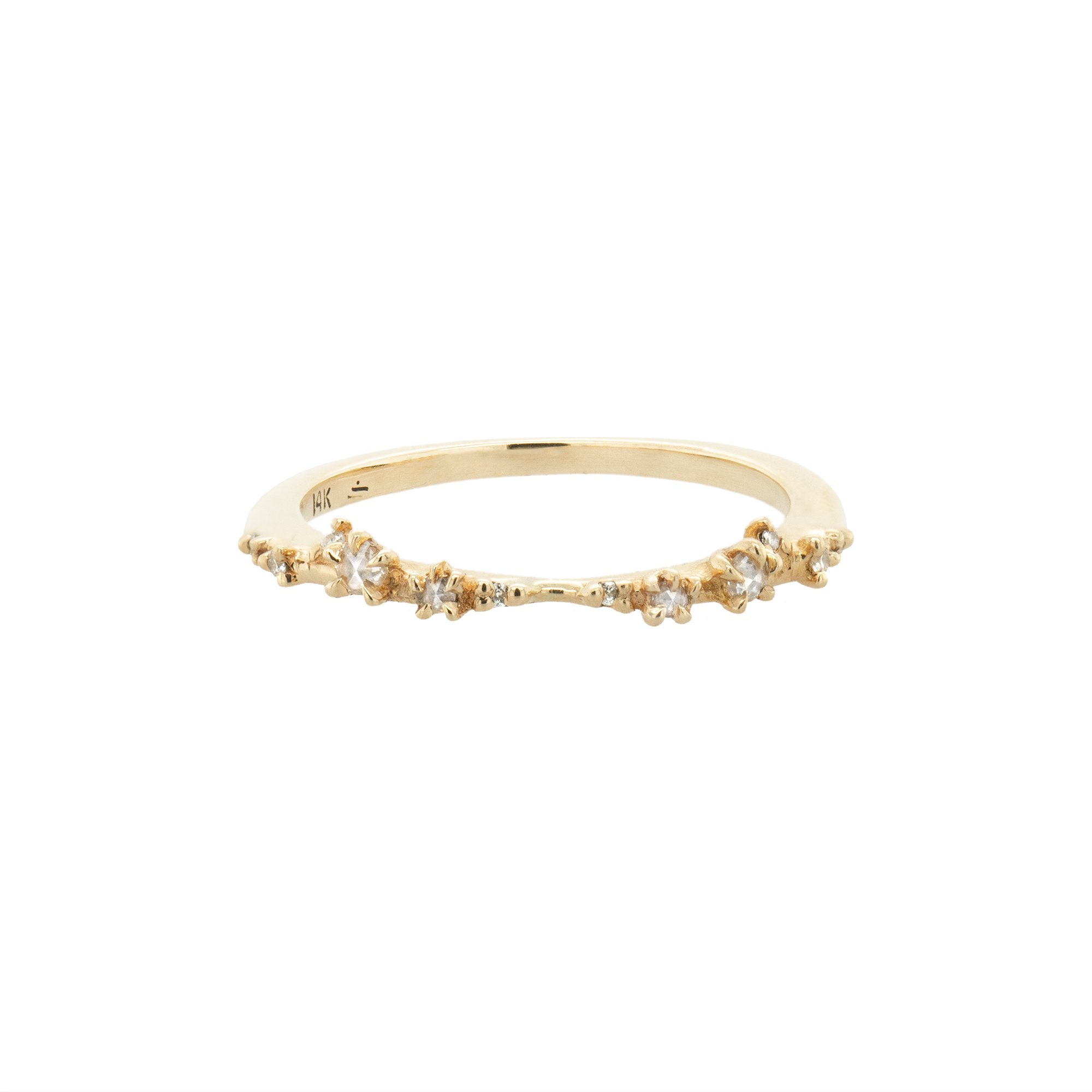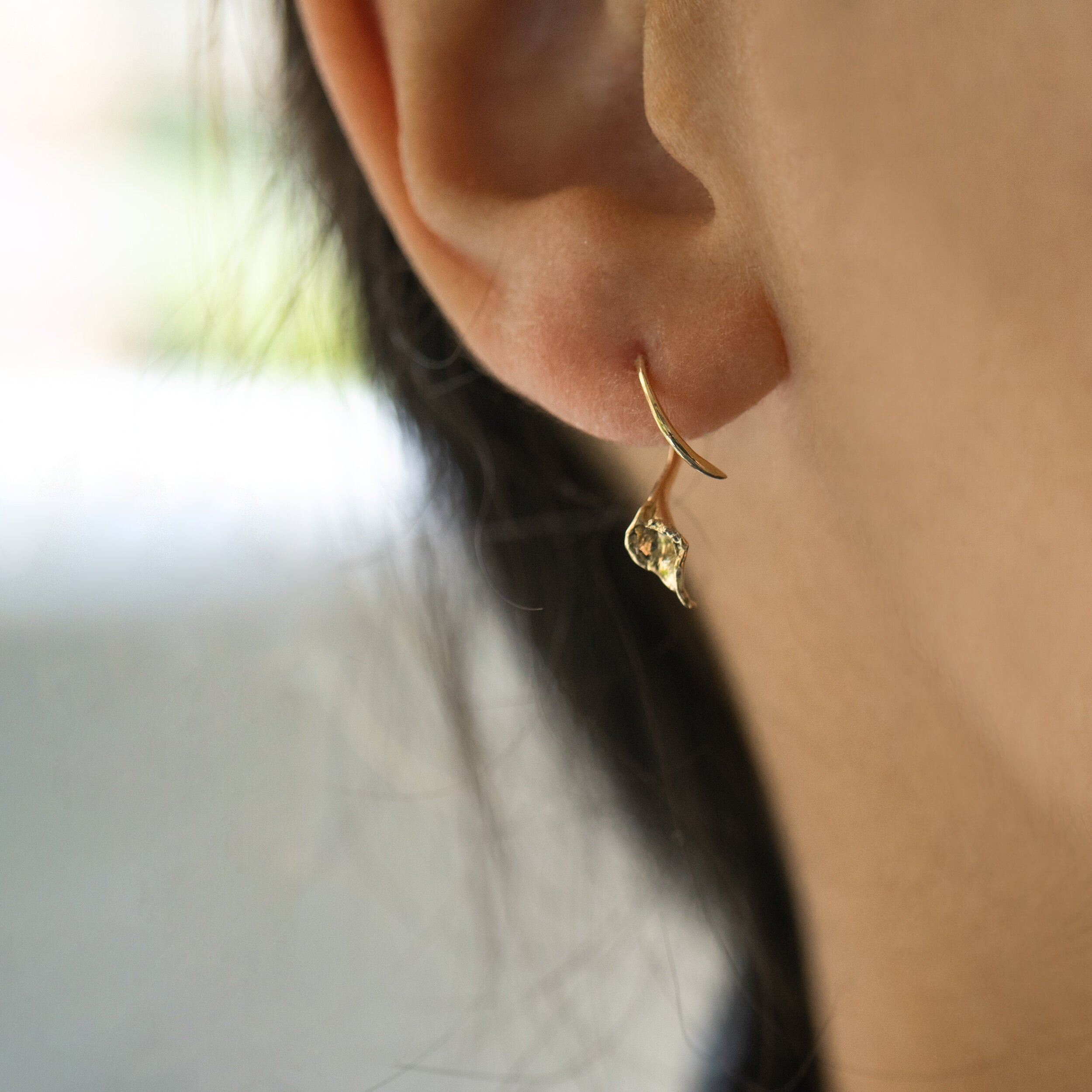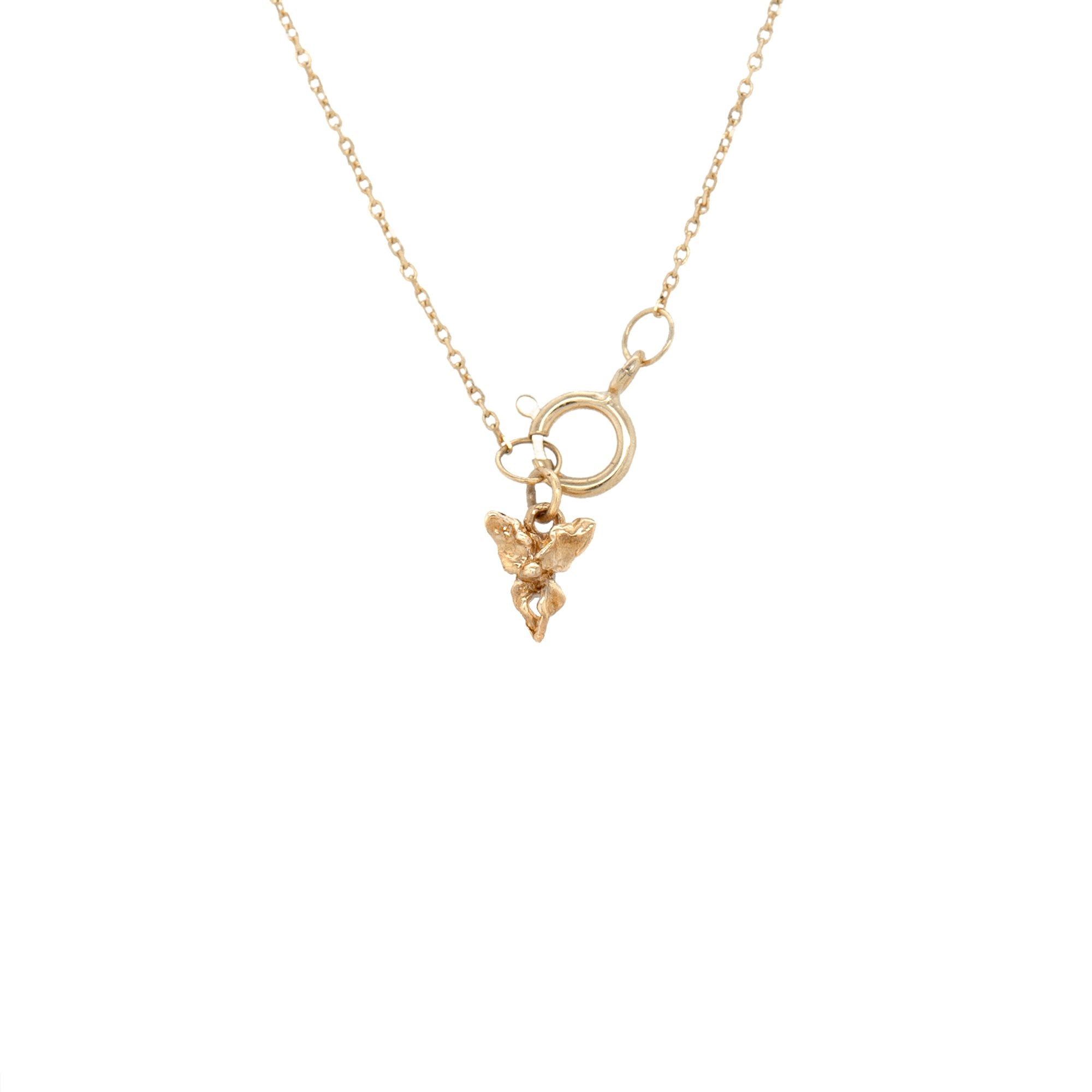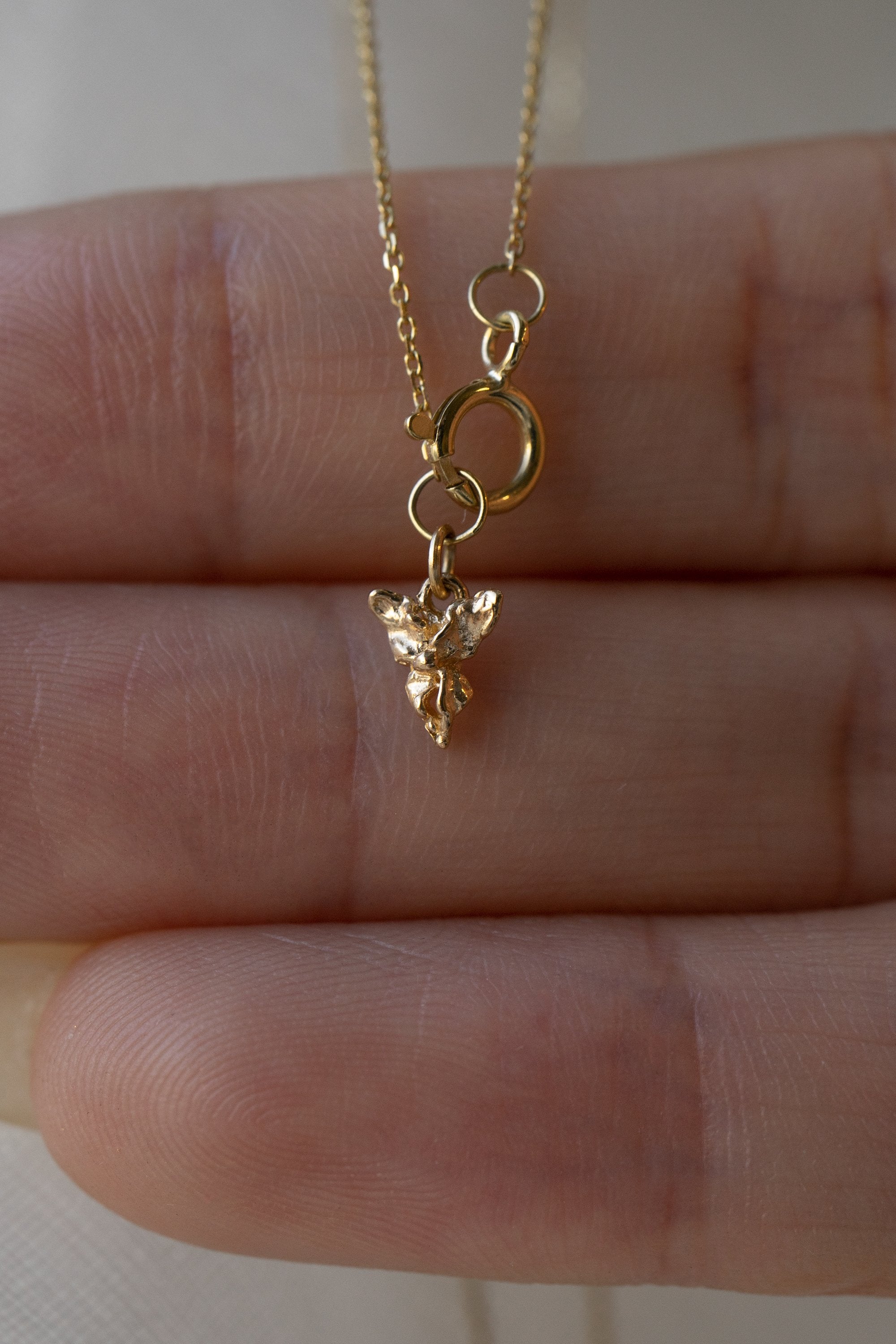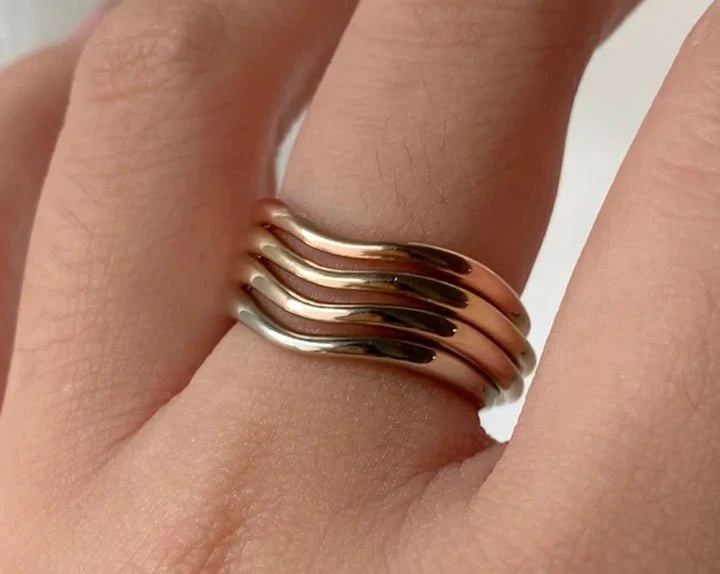Did you know that the gold in solid gold jewellery is actually a mix of gold and other metals? Pure gold is extremely soft and malleable; a single gram of it can be spread into a sheet that covers nearly a square meter. It can be manipulated with bare hands, and easily bends, dents, and scratches.
Outside of ceremonial or investment pieces, pure gold is much too soft to use in jewellery.
What is karat?
Karat is the measure of gold purity (not to be confused with carat, which describes gemstone weight!). When other metals are added to gold, it's called an alloy, which is a mixture of metals that are melted together. Gold alloys contain other metals like silver, copper, and zinc, which can improve the strength and durability of the gold, as well as change its colour.
| Karat | Gold percentage | Hallmarks |
| 10k | 41.7% | 10k or 417 |
| 14k | 58.3% | 14k or 583 or 585 |
| 18k | 75% | 18k or 750 |
| 20k | 83.3% | 20k or 833 |
| 22k | 91.6% | 22k or 916 |
| 24k | 99.9% | 24k or 999 |
The percentage of gold in a given karat weight will always be consistent, but the other metals in the alloy can have varying ratios. At Laurie Fleming Jewellery, we work primarily with 14k gold, but can work with 18k gold by request (email us for a quote!). We do not work with 10k, 20k, 22k, or 24k gold.
Gold Colours
Since the percentage of gold in a given karat is always consistent, the other metals in the alloy are what give white and rose gold their colours. Rose gold contains a higher percentage of copper to give it its rosy hue, while white gold contains more silver, nickel, zinc and/or palladium to whiten it.
For yellow gold, the higher the carat, the more "yellow" it will be, since it contains more gold. 20k and 22k are rich and warm, while 18k is a nice buttery yellow, and 14k is a more subdued yellow. 10k will be even lighter coloured. The less gold there is in the alloy, the less yellow it will be. In the Western world, most jewellery is 14k or 18k, so those are the colours we are most used to seeing.
Since alloys can vary between different jewellers, it's not uncommon for one jeweller's 14k yellow gold to be a different colour than another jeweller's 14k yellow gold. If you want a perfect colour match between two pieces, the best way is to order both pieces from the same jeweller.
This can also extend to the way the gold reacts to your skin; gold jewellery from one designer might leave you with dark marks on your skin, while gold jewellery from another designer doesn't. There are a few possible reasons this might happen -- one of them could be that the first designer's yellow gold contains more copper than the second designer's. You can read more about this phenomenon here.
A note on white gold and plating
White gold, since it's created with a yellow-coloured base, will often be at least slightly yellowish. In order to counteract this, most white gold jewellery sold by big-box retailers is actually plated in rhodium (a metal in the platinum family) to give it a bright white colour. However, plating wears away over time, and needs to be re-applied every few years in order to keep that bright white colour.
We don't plate our white gold jewellery, but our white gold alloy is already quite white. The only plated white gold we use includes any sourced chains or earring backs, which the manufacturers generally always plate— this is out of our control. The plating process uses chemicals which are not great for the environment, so we do try to avoid it. If you would like to ensure your metal is as white as possible, we can custom-make the piece in 18k or 19k white (“super white”) or platinum. We can rhodium plate our white gold pieces by request; email us for a quote.
Our white gold contains small amounts of nickel, which is normal for white gold alloys in North America. If you have any strong sensitivities, please get in touch to create your piece in palladium white gold (which uses hypoallergenic palladium instead of nickel) or platinum.
Other colours of gold
Gold can also come in other colours that are more rare to come across in jewellery. The most common of these alternative colours is green gold, which is an alloy of silver and gold. For thousands of years a number of cultures have used green gold (often called electrum) since it is a naturally occurring alloy of gold. Some Egyptian pyramids are topped with a thin layer of electrum!
An alloy of gold and palladium is sometimes called "grey gold". There are also some alloys that are possible to achieve certain colours, but these mixes are extremely brittle and difficult to work with. Purple gold, an alloy of gold and aluminum, can actually shatter if it's hit hard enough. Blue gold is similarly fragile.
Jewellery sold as "black gold" is actually usually gold that has a black rhodium plating. Some gold alloys can be "blackened" or "antiqued" through various chemical reactions, which is usually applied to recessed areas of a design as these patinas can wear off.
The only option of these alternative colours that we can work with is green gold; the rest are not suitable for our designs.
Champagne Gold
Champagne gold is a custom alloy that is mixed just for Laurie Fleming. It is a soft, romantic hue between yellow and rose gold, with a cooler tone, making it more neutral than other gold colour options. It looks beautiful with all skin tones and makes an excellent choice when you can't decide which colour to go with and want something unique!
Please note that Champagne gold contains nickel. If you have a nickel allergy, opt for yellow or rose gold (or contact us about palladium white gold or platinum).
To learn more about champagne gold and to see additional photos and videos, you can visit our page about it here.
Gold Patinas
"Patina" is a word used to describe a surface that has changed due to age or use; it might be used to describe the surface of a wooden table that has been well-cared-for over decades. In gold jewellery, it often describes small scratches that are amassed over time, giving the metal a soft, glowing finish. In antique rings, the patina is a cherished characteristic, as evidence that the piece was worn, loved, and cared for.
When gold is scratched, molecules of metal are actually removed. Scratches can be polished away, but by polishing we are simply removing even more metal -- for that reason we encourage you to embrace the scratches as evidence of the many special moments your jewellery has accompanied you for; after all, jewellery that is worn will show signs of wear (which is a beautiful thing!).
Sometimes, certain metals in an alloy can oxidize (darken when exposed to air) over time, and can get a sort of antique patina, particularly in recessed areas and cracks. It usually takes gold a very long time to oxidize (barring external influences), so you will most often see this in antique and vintage pieces.
So what about platinum?
Platinum is a very interesting metal that has very different properties than gold! Platinum is hypoallergenic, making it an excellent choice for those with metal sensitivities, and it has a bright, greyish-white colour. In jewellery, platinum alloys are usually 95% platinum and 5% other metals; they will be stamped "Pt" or "950". While platinum's spot price is usually less than gold's, it is a much denser metal, meaning the same ring in platinum will be much heavier than it is in gold.
Platinum also has very high ductility, which means that it can be pulled into a very long and very thin piece without breaking. Sometimes, platinum is described as a "gummy" or "sticky" metal to work with; this is because it likes to hold on to all of its molecules, and when we are polishing it, instead of wearing away the metal with finer and finer scratches until a high polish is achieved (which is how most metal is polished), with platinum we are smoothing the metal out. Polishing platinum is a very labour intensive process and can easily take more than double the time it takes to polish a gold ring.
Because of this gumminess, that also results in platinum getting a sort of "cloudy" patina as you wear it. This is because, when platinum scratches, it doesn't lose the metal, it just gets shifted around, so the bright shining finish will gradually become more soft and muted. Over time, the surface of the metal will get compacted and hardened with wear, resulting in a bright finish again.

